
Last summer I grew three varieties of corn in my tiny garden. I knew from the start that my harvest, if any, would be meagre. The plants would be hindered by poor soils, assertive pigeons and, worst of all, my pathetic knowledge of farming. Luckily it wasn’t so much the product I was interested in, as the process. I was interested in the idea of crop diversity – and in what it means to conserve it.
Today hundreds of organisations around the world, from community non-profits to international research agencies, strive to conserve crop diversity. Many are worried about a future in which today’s industrial monocrops wither in the face of climate change, drought and emerging diseases, forcing farmers and plant breeders to look for crops with traits suited for a changing planet.
Today’s conservationists are trying to ensure that uncommon varieties of grains, vegetables and fruits remain available to future generations who might need the options they provide. But approaches to this shared goal can vary dramatically. I hoped that getting some seeds – and my hands – in the soil would help me better understand what makes conservation so challenging.
Decades of research has revealed that the diversity of the plants we grow for food has diminished since the early 20th century. Scores of seeds no longer in widespread cultivation are maintained by agricultural institutes as resources for future crop research and development. Copies of the most valuable of these collections are ferried to the Arctic for long-term cold storage in the Svalbard Global Seed Vault.
This widespread attention to endangered seeds hasn’t always been the case. Agricultural experts began insisting on the importance of preserving local strains of key crops in the 1880s. But it wasn’t until the 1970s that governments started to put significant resources into this issue and to coordinate conservation efforts across countries.
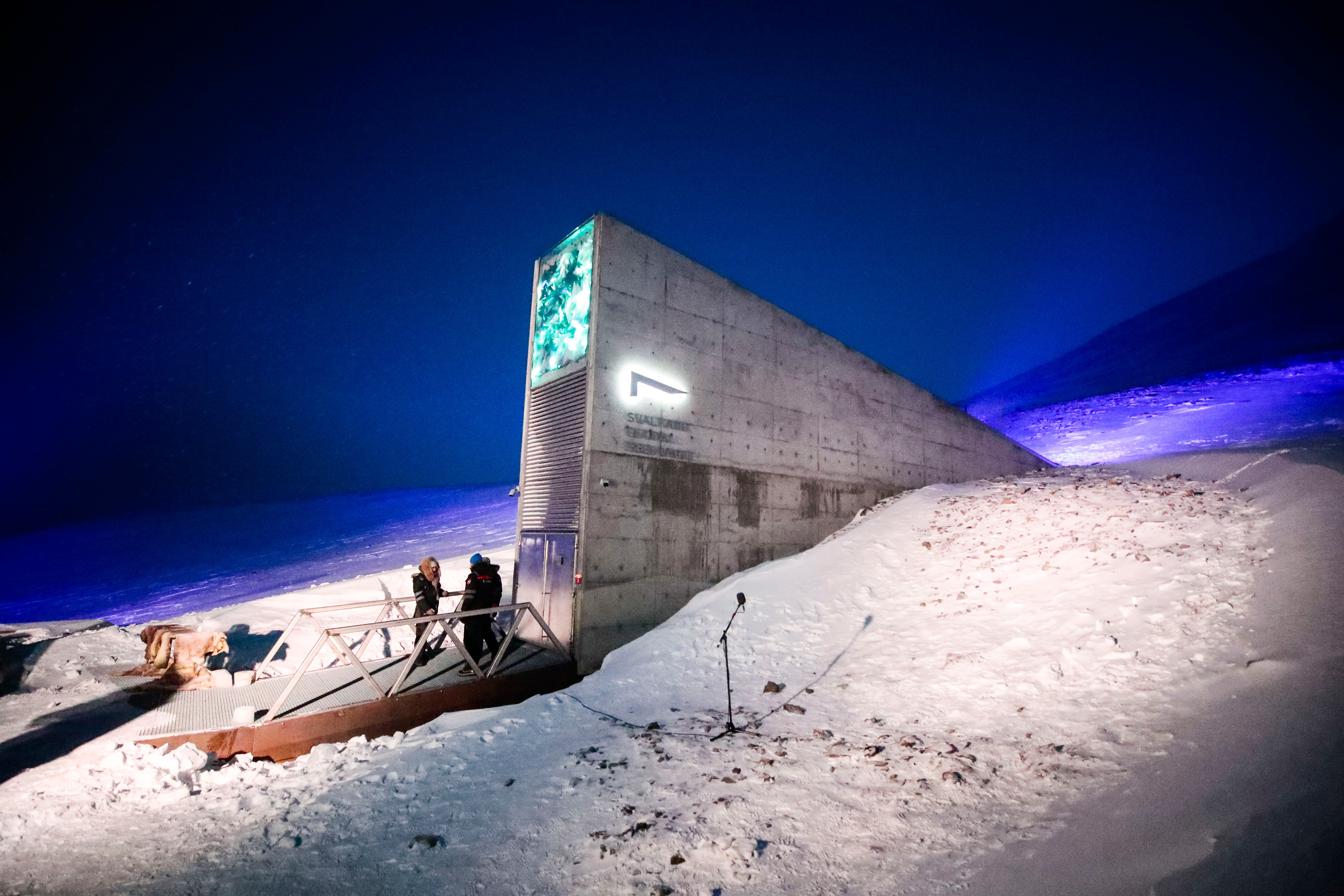
In the intervening period, many scientists and research institutions created collections of their own. Some were enormous. In Soviet Russia, the botanist and geneticist Nikolai Vavilov orchestrated world-spanning collection missions in the 1920s and 30s. By 1940 he and his colleagues had amassed some 250,000 samples of diverse crop varieties and crop wild relatives in Leningrad.
Most collections were specialised. While Vavilov traversed the globe hoping to turn his department into “the treasury of all crops and other floras”, the British botanist AE Watkins drew on imperial networks, for example connections at the London Board of Trade, to have wheat seeds from around the world sent his way. By the 1930s, he had about 7,000 samples of different varieties in his collection.
Few collectors were able to aspire explicitly to long-term preservation. Seeds are living things and will gradually die in storage, typically over years or decades depending on the type of seed and how it’s kept. As a result, keepers and curators of collections must monitor seeds’ viability and be ready to sow, grow, and harvest a fresh batch of seeds when that viability drops off. For a collection of even a modest size – let alone for one of 250,000 samples – this is big commitment.
Long-term conservation action was slow to materialise as a result. It was hard to convince both scientists and states to bother with time-consuming monitoring and regeneration of collected “old” varieties, especially when all the reward seemed to be in making and growing new ones. Industrial farms, private seed companies and development experts were all transfixed by so-called modern varieties, with little time to spare for what had come before.
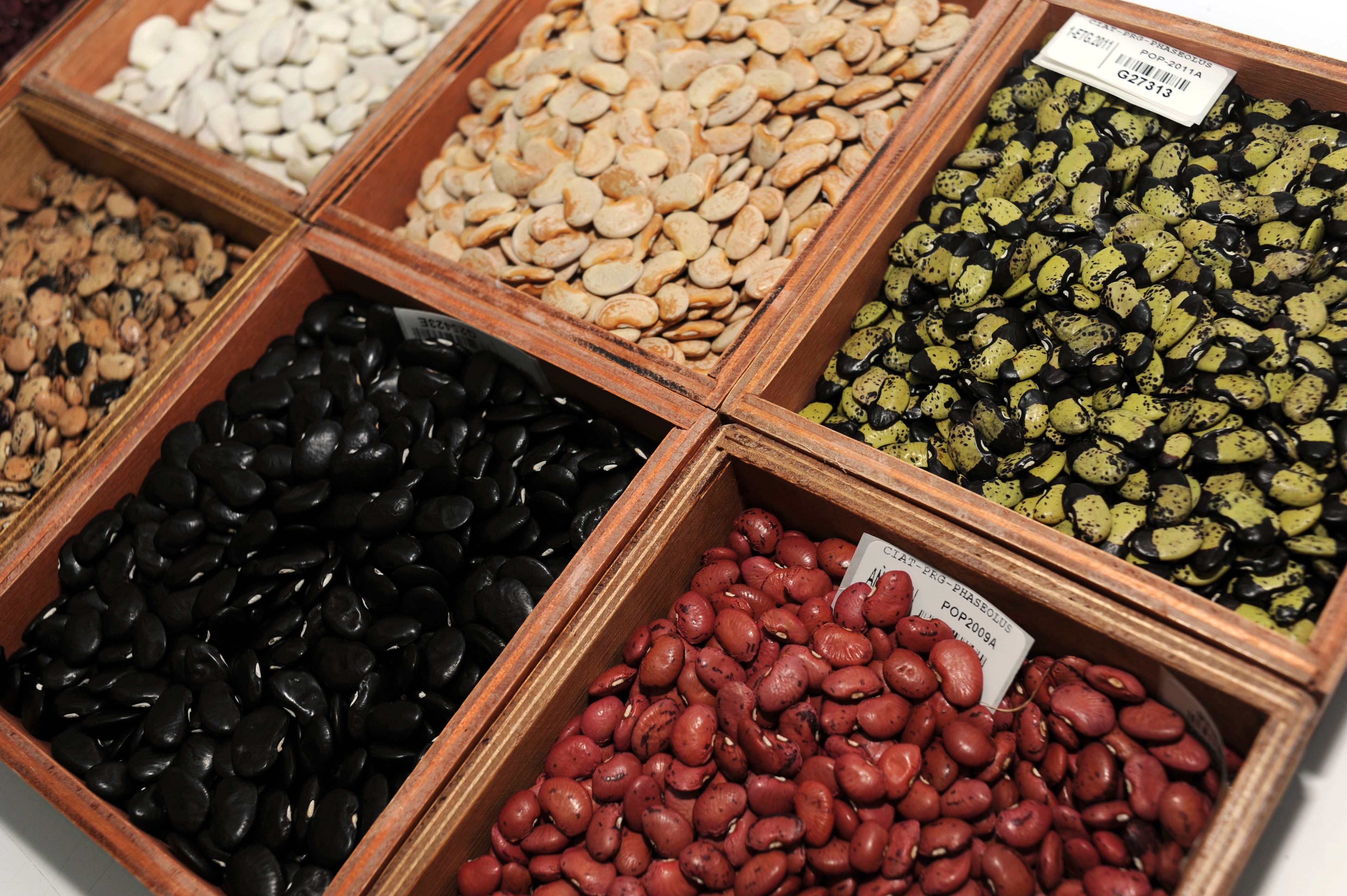
So what turned the tide? And why does it matter? To answer these questions, I dove deep into the history of seed banks and crop conservation. I visited active research stations and institutional archives, spoke with today’s seed conservation specialists and sifted through the papers of their predecessors. My findings are documented in my book, Endangered Maize.
An early breakthrough came as I thumbed through files at the archives of the US National Academy of Science. Inside several folders labelled “Committee on Preservation of Indigenous Strains of Maize” from the 1950s lie minutes and records charting more than a decade of efforts to collect varieties of Zea mays – also known as maize or corn – from across the western hemisphere and, most ambitiously, preserve them in perpetuity. This immediately stood out to me. Here was an early outlier in the history of crop conservation: an international effort with its eyes on the very long term.
I’m sceptical that seed banks – still conceived today as the central element in successful conservation of genetic diversity in crop plants – offer the long-term solution we need
The members of this Maize Committee worried that the corn varieties developed by professional breeders and sold by seed companies were steadily supplanting the kinds traditionally grown by farmers in Latin America. They called these varieties “indigenous strains” but today many scientists would speak of these locally adapted, farmer-saved lines as “landraces”.
From the northern deserts of Mexico to the tropical lowlands of Brazil to the highlands of Peru and Ecuador, the diverse peoples of the Americas had created many kinds of corn over centuries of cultivation and trade. The committee wanted to preserve these – not as crops cultivated and harvested by farmers – but as samples maintained in research facilities that they could study as geneticists and improve as breeders.
The Maize Committee succeeded in gathering thousands of seed samples. By 1960 most were stored in what the committee members referred to as “seed centres”, but which today we would label seed banks or genebanks. These were among the earliest facilities designated specifically for long-term seed conservation. The committee hoped that refrigerated storage at the centres would extend seeds’ lifespans and keep the inevitable task of regenerating samples to a manageable minimum.
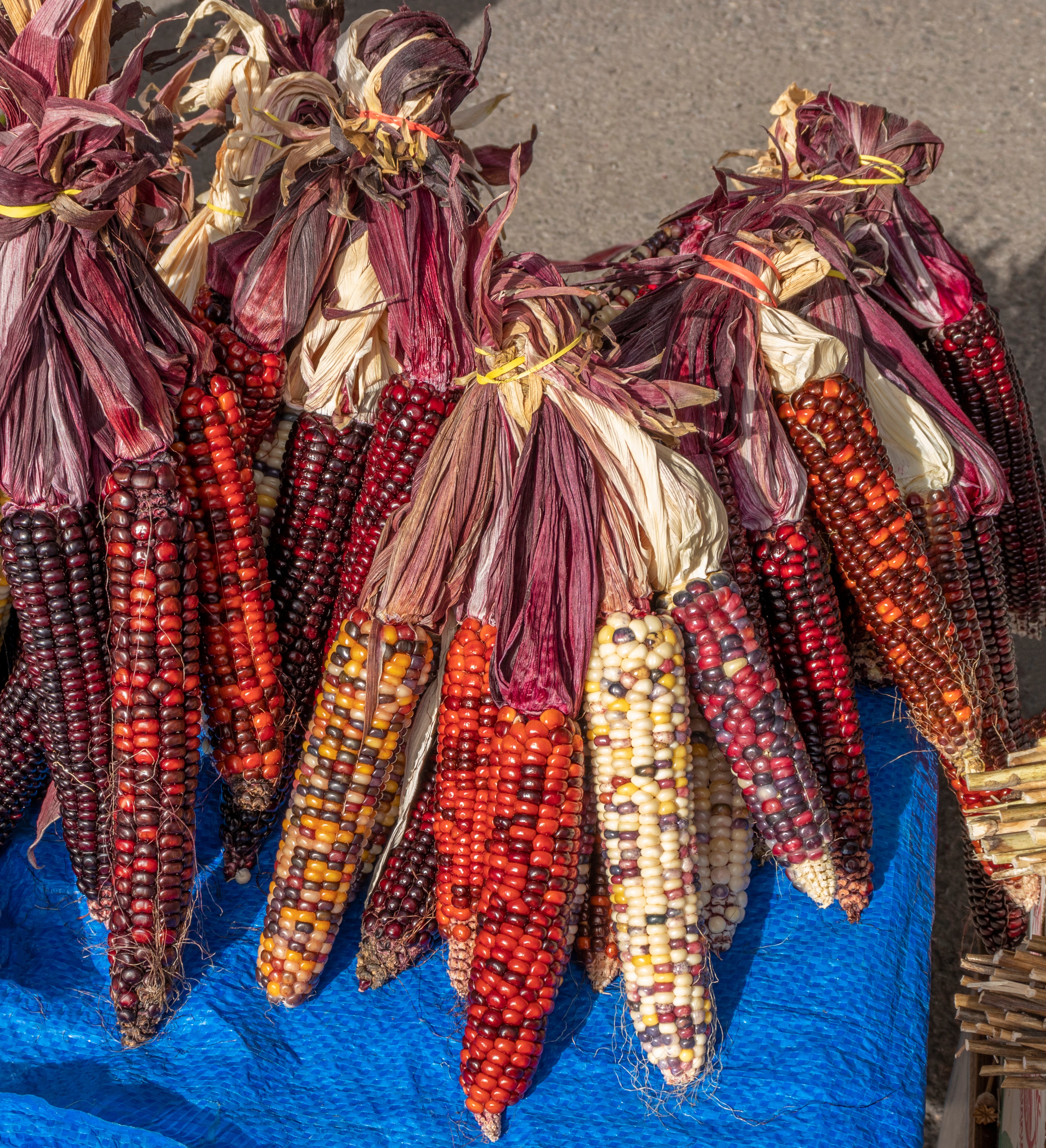
Fast forward seven decades. Curious about the fates of these samples, I traced their journeys whenever paper trails and research budgets allowed. While visiting a seed bank in Mexico, I held a jar filled with seeds collected during those early missions. I passed descendants of many similar samples as I navigated the aisles of the US maize germplasm collection in Iowa. Clearly the Maize Committee had some success in its mission to secure seeds.
Despite this, I’m sceptical that seed banks – still conceived today as the central element in successful conservation of genetic diversity in crop plants – offer the long-term solution we need. The history of maize can help us understand why.
F1 hybrid corn – a triumph of capital?
To explain this, we need to get back to the Maize Committee. What drove its collecting and conservation enterprise in the 1950s? A simple answer is hybrid corn. This was the looming threat that worried the Maize Committee as it surveyed the future of corn diversity across the Americas.
I planted what’s known as an F1 hybrid variety in my garden last summer. It was a sweet corn, with creamy yellow kernels just like the corn I buy from the grocery store near my home. Cooked within minutes of being cut from the plant, it was meltingly tender and unbelievably delicious.
The “F1” stands for “first filial” and it indicates that the seed was produced by hybridising two genetically distinct parent lines. Those parent lines in turn had been produced through years of inbreeding, a process that ensured they would possess and pass on only the qualities that scientists wanted.
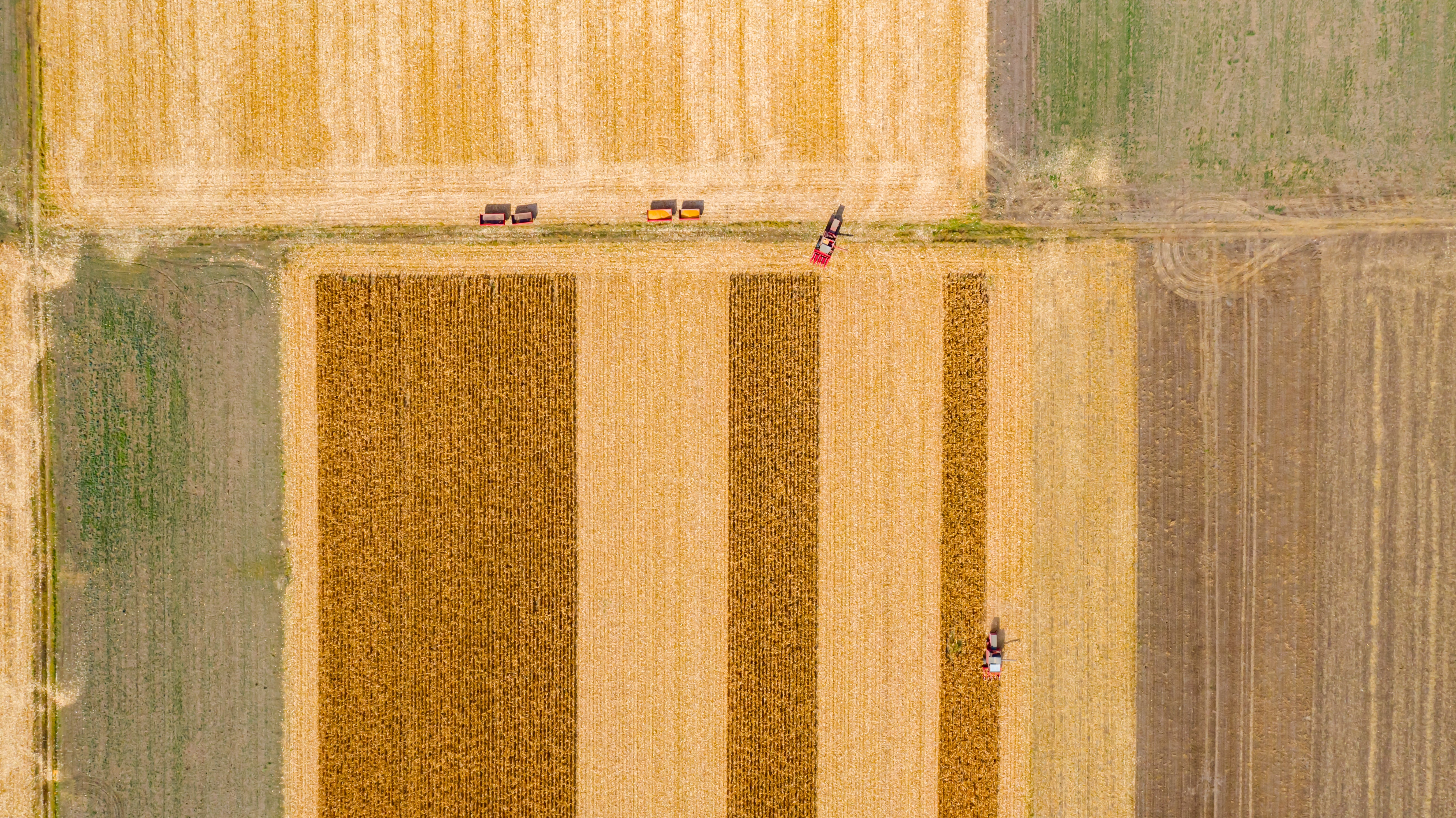
My F1 hybrids had been through a process of genetic standardisation in which professional plant breeders had eliminated many potential sources of variability among them. I could expect plants of about the same size, ears of uniform colour, and that they’d all develop at roughly the same rate.
Historical accounts often pinpoint the invention and rapid adoption of F1 hybrid corn from the 1940s, initially in the midwestern “corn belt” of the US, as a turning point in agricultural history. In Iowa, the heart of the corn belt, hybrid varieties accounted for 1 per cent of corn acres planted in 1933. By 1945, they represented 90 per cent.
For some observers, hybrid corn represented a first triumph of the science of genetics, in which better understanding of the principles of heredity led to improvements in agricultural productivity and economic gains.
For others, it was more a triumph of capital. The genetic makeup of a hybrid line means that subsequent generations grown from its seeds aren’t as productive as the parent plant. As a result, farmers cannot save their own seeds but instead must purchase fresh hybrid seeds each season. For seed companies, the most important outcome of the F1 hybrid method was not more productive varieties but a guaranteed revenue stream through the commodification of the seed.
Geneticists and corn breeders were inclined to see the swift uptake of hybrid corn as a good thing. But some found the speed at which midwestern cornfields “upgraded” from eclectic assemblages of locally adapted varieties to homogeneous stands of hybrid varieties disconcerting. The botanist and geneticist Edgar Anderson warned his colleagues in 1944 that “the whole genetic pattern of Zea mays [corn]” had been “catastrophically overhauled”.
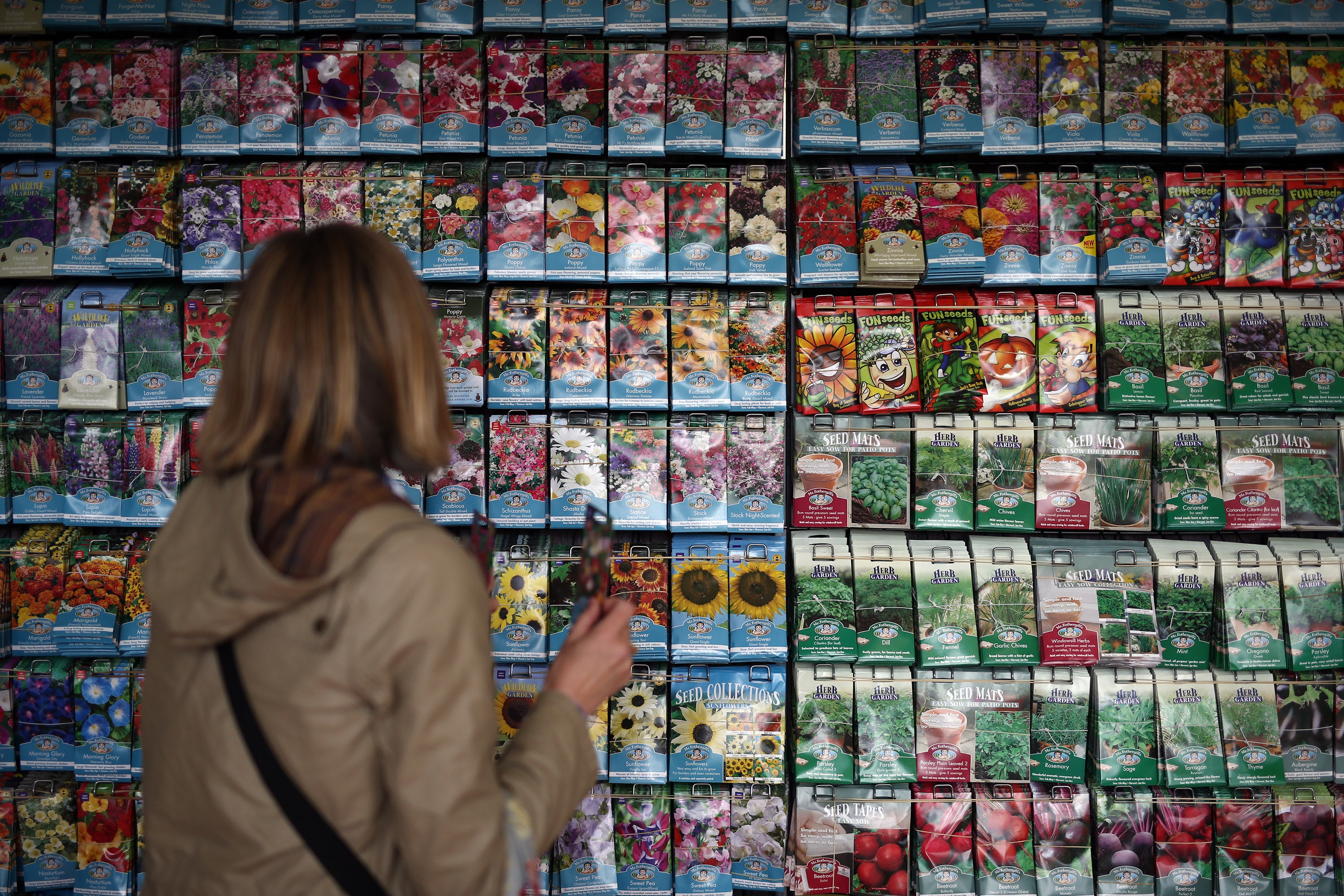
Anderson thought that there was still a lot to learn from the older varieties – including information that might make new hybrid corn still more productive. But without farmers to plant these, and save their seed from season to season, they weren’t likely to be available long to study. He called on his colleagues to think of some way to organise their conservation. Perhaps some farmers could be paid to grow them, he thought.
Neither Anderson nor any other scientists mobilised to systematically preserve farmers’ varieties in the US midwest. But when they learned of new state agricultural programs in Mexico, Brazil and other Latin American countries setting up shop in the 1940s and heard of hybrid seed companies making inroads with their commercial varieties, alarm bells went off. What if new corn varieties swept across these countries just as they had across the US?
Locally adapted varieties of maize and other crops that scientists categorised variously as ‘indigenous’, ‘native’, and ‘primitive’ would give way to ‘improved’ and ‘modern’ lines
This prospect was worrying because of the tremendous diversity of maize varieties grown across Latin America. Farmers harvested wide-kernelled white flour corn, slender red popcorn, deep purple flint corn and more. They grew towering 20ft giants and scrubby desert bushes. Some types were dried and ground for flour and others eaten fresh as a vegetable. The manifestations of maize were as diverse and distinctive as the peoples who grew them.
An anticipated transition away from these diverse landraces explains the rapid mobilisation and almost bewildering ambition of the Maize Committee in the 1950s. The committee members assumed they had about a decade in which to gather farmers’ locally adapted varieties before hybrid corn and other professionally bred products overtook them.
The Maize Committee did not want to stop this transition. Most members were corn breeders themselves and all thought that the introduction of breeders’ “improved” lines, hybrid or otherwise, represented agricultural progress in form of higher grain yields and greater economic returns. That’s why they felt it safe to assume that farmers would inevitably shift from their locally adapted landraces to seeds of new varieties. Surely, they thought, it would be in farmers’ best interest to grow the best that scientific breeding had to offer?
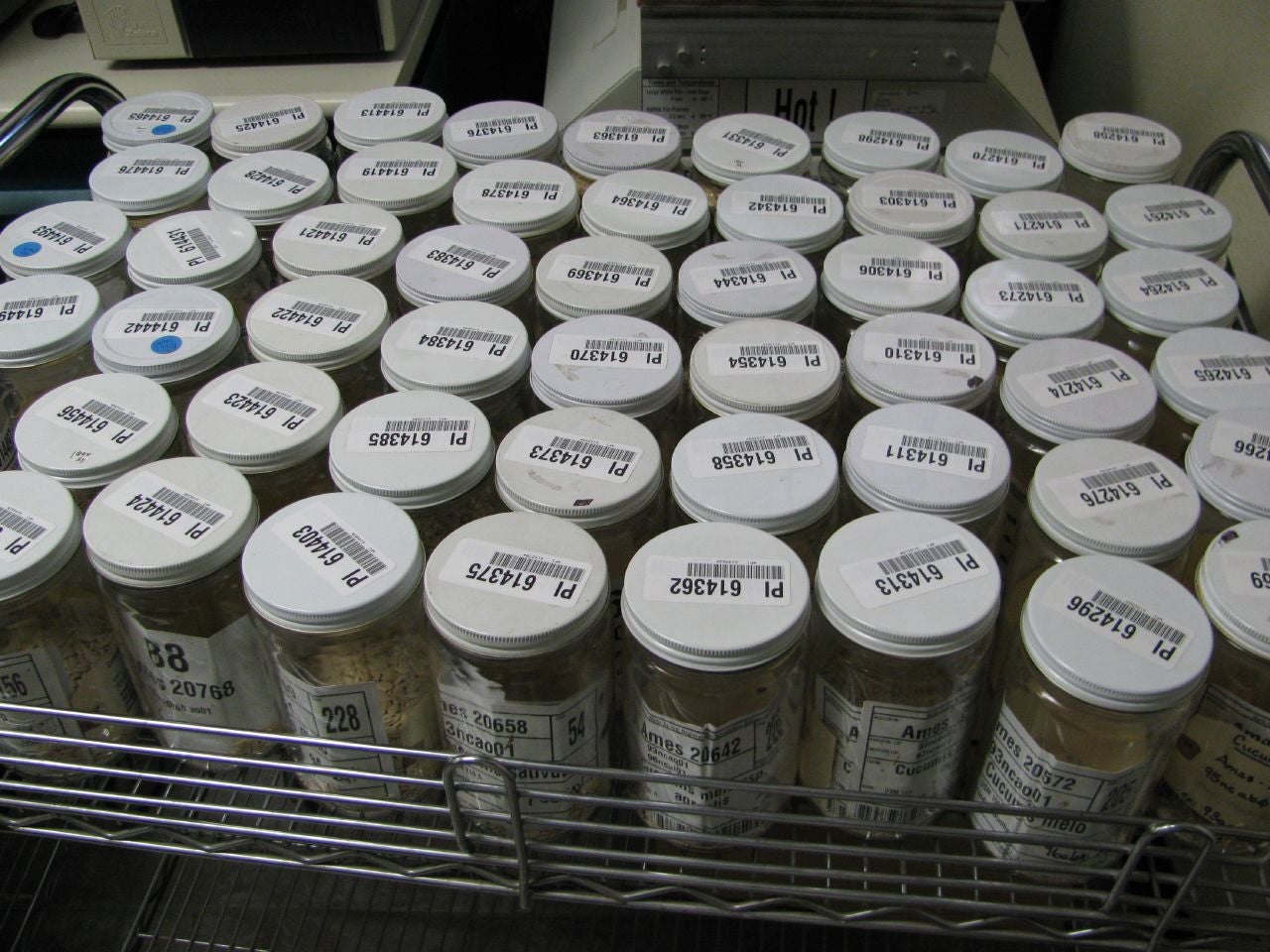
The Maize Committee therefore pursued the preservation of corn varieties they considered in danger of disappearing – which is to say, all “indigenous strains” – as samples in refrigerated storage. The main collections of these samples were sited at agricultural research stations in Brazil, Colombia, and Mexico. Farmers were superfluous to this model of conservation. Maintaining crop diversity was a task for technical workers at central research facilities and not farmers in far-flung rural communities.
In 1956, with more than 12,000 samples collected and stored “in perpetuity” according to this model, the Maize Committee declared its conservation enterprise a resounding success.
Hopi blue corn
In setting out their conservation objectives and methods, the members of the Maize Committee assumed a singular, inexorable trajectory of agricultural development. Farmers would surely adopt breeders’ new varieties as these were introduced. Locally adapted varieties of maize and other crops that scientists categorised variously as “indigenous”, “native”, and “primitive” would give way to “improved” and “modern” lines. In the process farmers would transition, too, casting off approaches to cultivation usually denigrated as “primitive” or “backwards”. It was not a matter of whether these shifts would happen, but when.
This projection of inevitable cultural and agricultural change informed not only the work of the Maize Committee but also the efforts of many scientists who engaged in the conservation of crop diversity in the decades that followed. They constructed seed and gene banks to preserve the world’s “primitive” and “traditional” crop varieties, assuming a world in which neither these varieties nor the modes of farming that sustained them would survive.
Internationally coordinated seed banking projects intensified in the late 1960s when “agricultural modernisation” was seen to accelerate in developing countries, thanks especially to the creation of new “high-yielding varieties” and aid programmes that sought to embed these as widely as possible.
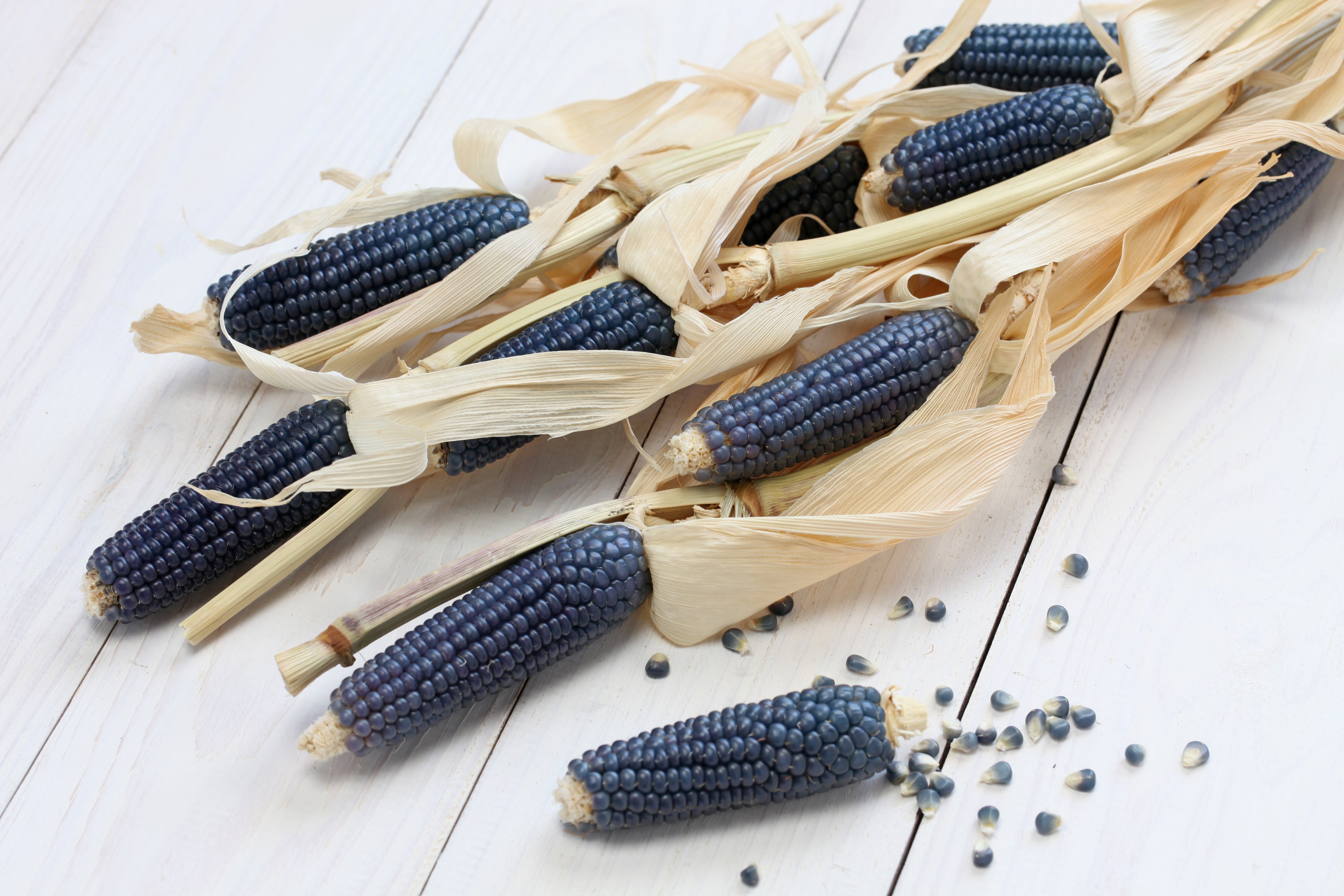
Yet even as an international infrastructure for seed bank based conservation took shape, researchers began poking holes in the extinction narrative that sustained it.
One especially disruptive piece of evidence was the discovery that, in some places, farmers didn’t change over to newly introduced “high yielding” crop varieties, even when they had an opportunity to do so. Or that when farmers did adopt new seed, they also kept continued growing the older types, too. As a result, varieties slated for inevitable extinction in the 1950s hadn’t disappeared.
They still haven’t. Another variety I coaxed out of the soil last summer was Hopi blue corn. I wasn’t sure whether the British climate would be to the liking of these seeds, which trace their origins to the deserts of the American south-west and the labour of generations of Hopi farmers. To my delight, however, the seeds I planted eventually produced gorgeous ears of plump, lavender-coloured kernels. These were chewy and nutty, and only delicately sweet, making a more satisfying savoury side than their hybrid neighbours did.
This type of corn, along with others originating among Hopi and neighbouring Native American communities who have cultivated corn in the hot, dry south-west for thousands of years, were among those targeted by the Maize Committee in the 1950s. The committee assumed their fields represented some of the only remaining sites of significant maize diversity north of the US-Mexico border and dispatched the ethnobotanist Hugh Cutler to collect there in 1953.
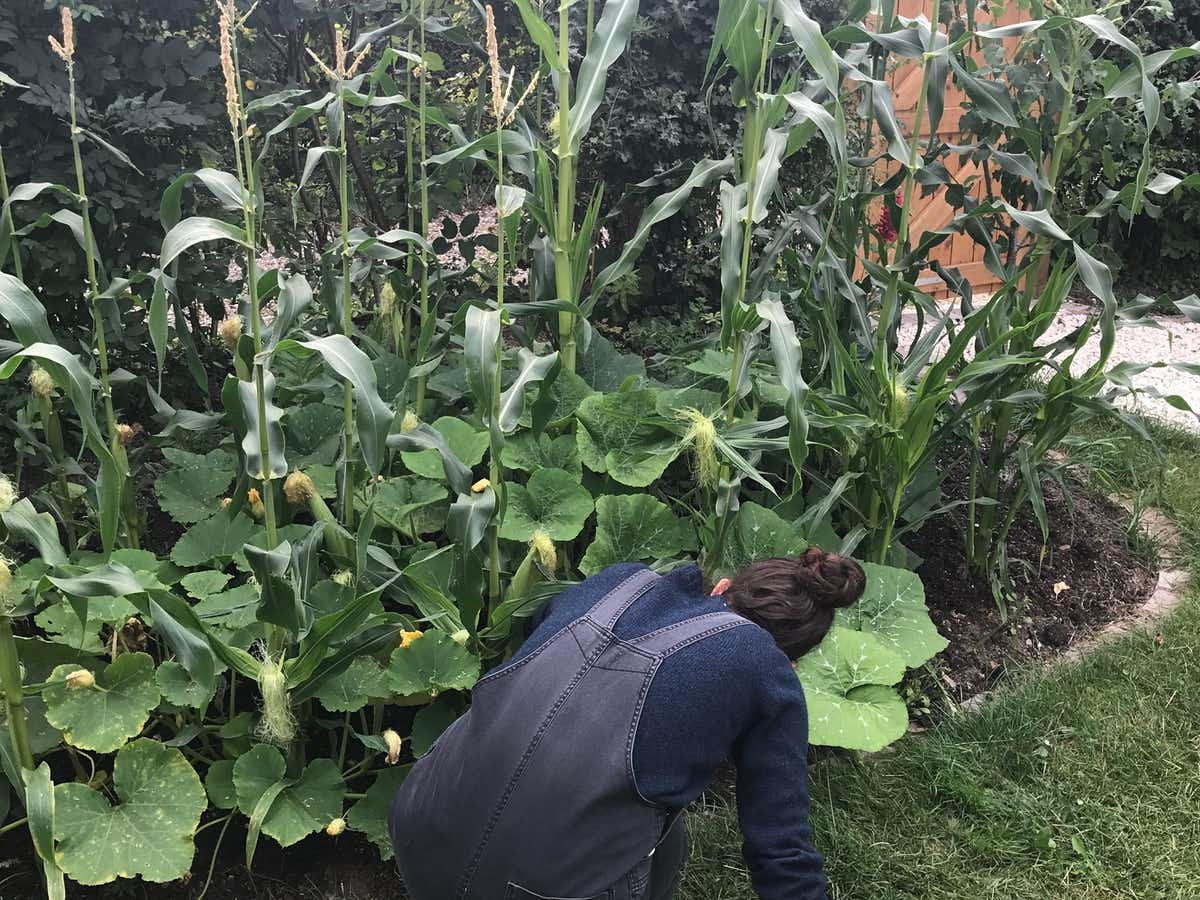
As he travelled to pueblos of the south-west, Cutler encountered many farmers growing blue maize varieties. He learned that these were preferred for their tolerance of drought and resistance against insect pests and because they produced excellent flour.
Cutler and the Maize Committee imagined these seeds and others obtained from Native American farmers would only remain safe in perpetuity in the seed bank – unlike in farmers’ fields where, according to Cutler, many growers had already “practically ceased to grow their old kinds of corn”.
Three decades later, a trio of researchers visited farmers of the same region. Seeking to document the diversity of crops still in cultivation in the late 1980s, they focused in on Hopi farmers.
There is also a growing movement to protect and, where needed, to restore the crop varieties traditional to certain communities as a means of defending sovereignty over land and food
After visiting more than 50 growers in 1988 and 1989, they concluded that the fields of Hopi farmers were “dominated by Hopi crop varieties”. These were better suited to the harsh desert environment than commercial alternatives and treasured for ceremonial and other specific uses.
These findings confirmed a pattern that researchers had observed repeatedly by the early 1990s. Many farmers continued to grow diverse “traditional” crop varieties, despite expectations to the contrary.
Maize fields in the Mexican highlands, potato plots in Peru, rice paddies in Thailand: these and other spaces where anthropologists and botanists discovered farmers’ varieties still in cultivation suggested that “modernisation” was not the singular, all-encompassing pathway often imagined.
In fact, farmers had many reasons to maintain diversity. Growing lines with different characteristics, and which would respond differently to drought or heat or wind, offered security against bad weather and unpredictable climates. Some varieties were valued for qualities that professional plant breeders neglected, everything from prized flavours to the ability to be stored for long periods. And sometimes breeders’ new offerings just didn’t grow as well or produce as much as established local varieties did.
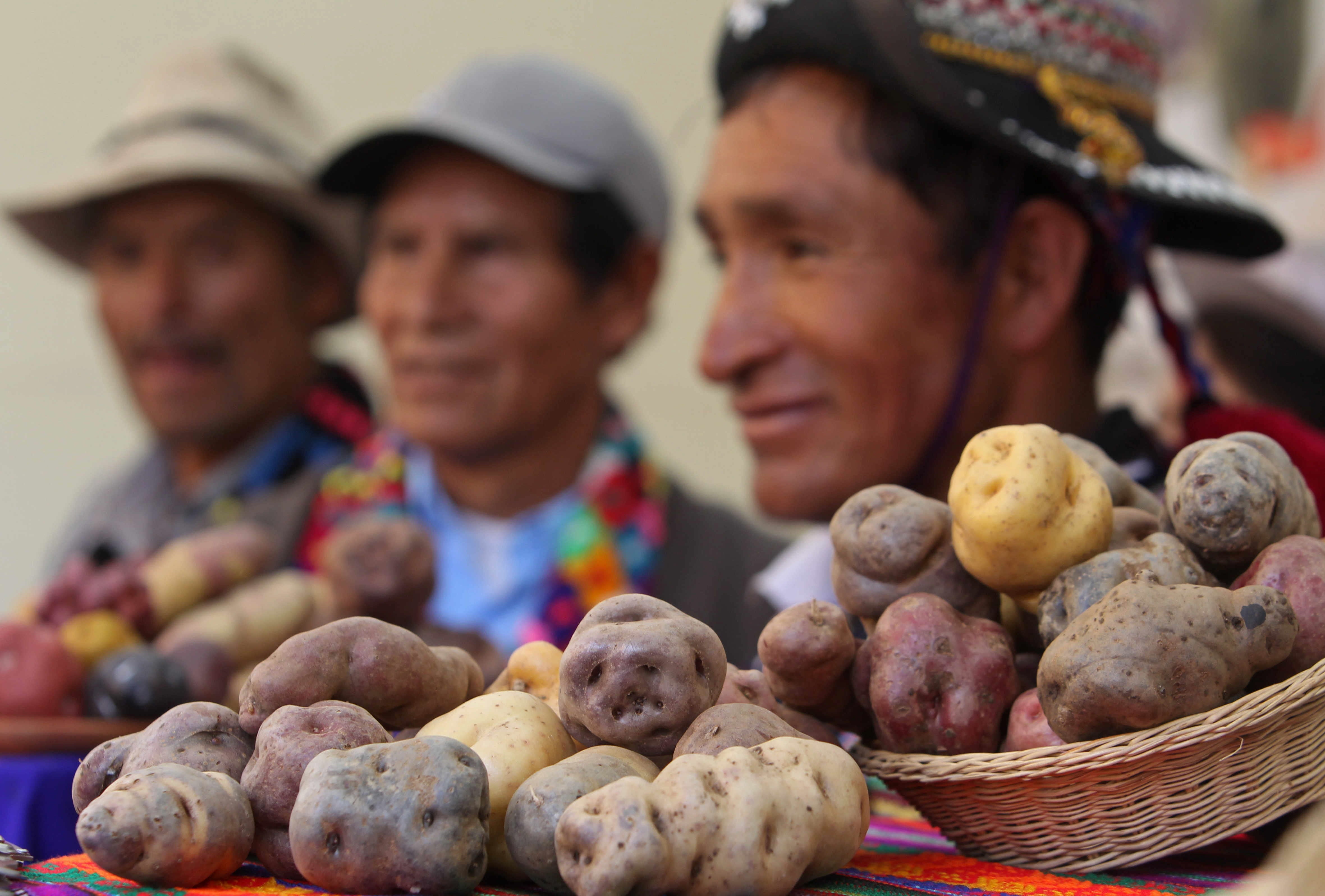
A new conservation vision emerged on the heels of these observations, informed by the realisation that so-called “traditional” farmers had a deep knowledge of farming methods and the environments in which they lived.
New “on-farm” conservation programmes aimed to support the farmers cultivating local varieties. Activists and scientists organised community-run seed banks. Participatory breeding programmes helped farmers enhance the productiveness of local varieties and thus keep them in cultivation. These and other projects encouraged conservation on farms by farmers – rather than in cold storage facilities run by technicians.
Programmes like these would help sustain farmers and communities who had not benefited from the top-down agricultural development of previous decades. And rather than dictate farmers’ transformation from “traditional” into “modern”, they would recognise the value of diverse communities and cultures. They would contribute to not only communities’ survival, but also their flourishing.
The contrast between this approach to conservation and the cold-storage model espoused by the Maize Committee could hardly be more stark.
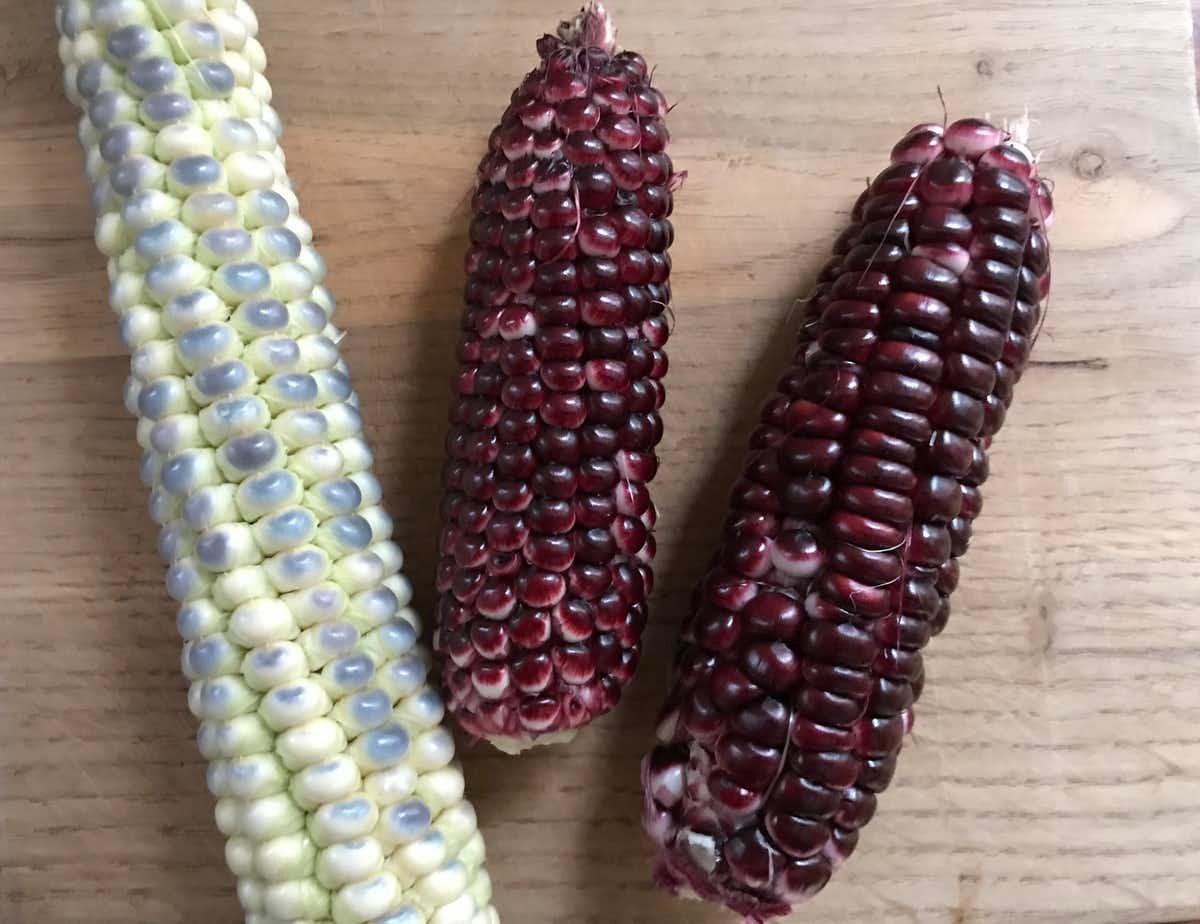
Double red sweetcorn
Since the 1990s, efforts to ensure the survival of the world’s maize diversity have taken a variety of forms.
Most state-led conservation activity remains centred on cold storage in seed banks. When studies in the 1970s and 1980s suggested that seed banks often struggled to maintain samples in the ideal conditions demanded for successful long-term conservation, collection managers responded by duplicating their collections and sending the copy for safekeeping at another facility.
This recourse to copying was a tacit acknowledgement of the challenges faced in keeping seeds alive in cold storage, especially in contexts where governments failed to cough up the required financial support.
Over time it produced an elaborate system of back up. Today this system has reached its apex in the Svalbard Global Seed Vault. Its holdings include copies of the preeminent global maize collection of the International Centre for the Improvement of Maize and Wheat in Mexico. The Svalbard vault is seen by many people as the ultimate guarantor that crop diversity will survive for future generations to use.
But others disagree. Participatory breeding programmes, community seed banks, subsidies to “seed guardians” and other farm and farmer-centred programmes run counter to the idea that diverse varieties must inevitably disappear from fields and therefore be frozen to survive. In this view, seed banks may be an important safeguard, but never the only sites where genetic diversity is kept alive.
There is also a growing movement to protect and, where needed, to restore the crop varieties traditional to certain communities as a means of defending sovereignty over land and food. The network Braiding the Sacred brings together Native and Indigenous corn growers to share knowledge, practice – and seeds – with the aim of increasing the cultivation of traditional maize, as well as other foods.
Accounts of nearly vanished varieties, recovered intact as they were once grown, often from an isolated farmer or an aged gardener, are far more common
Seed banks have occasionally played a significant role in farm-based conservation programmes, for example by rematriating seeds of varieties otherwise lost to growers. And as the changing climate, water stress and resource shortages intensify the challenges to global agriculture, creating demands on breeders to produce resilient crop varieties, scientists’ access to seed-banked materials is more important than ever before.
But crop diversity saved on a farm and in the bank are different. Seeds sown and harvested are seeds in motion, not just geographically but genetically.
A good example of this is a recent seed sensation. Glass gem corn burst onto the scene in the 2010s, thanks in large part to the glittering multi-coloured kernels from which it derives its name.
Although it has been described as a “poster child for the return to heirloom seeds”, glass gem is not an old variety but a new one. Its creator, the Oklahoman Carl Barnes, started collecting corn varieties in the 1940s, inspired by memories of the corn grown by his Cherokee grandfather. He especially prized varieties associated with Native American communities, which he gathered from across the country.
Barnes was interested in preserving history, but for him this didn’t mean keeping varieties as static as museum samples. It meant cultivating. And it especially meant mixing. Barnes allowed different kinds to cross-pollinate in the fields and selected new types from the subsequent mosaic.
In the 1990s, a small, rainbow-kernelled line that Barnes developed from a mix of a few varieties caught the eye of another corn enthusiast, who started growing the seeds in New Mexico. There it cross-pollinated with larger, local flour corns, before making its way into the hands of the director of an heirloom seed organisation and to eventually into internet fame and impressively widespread cultivation.
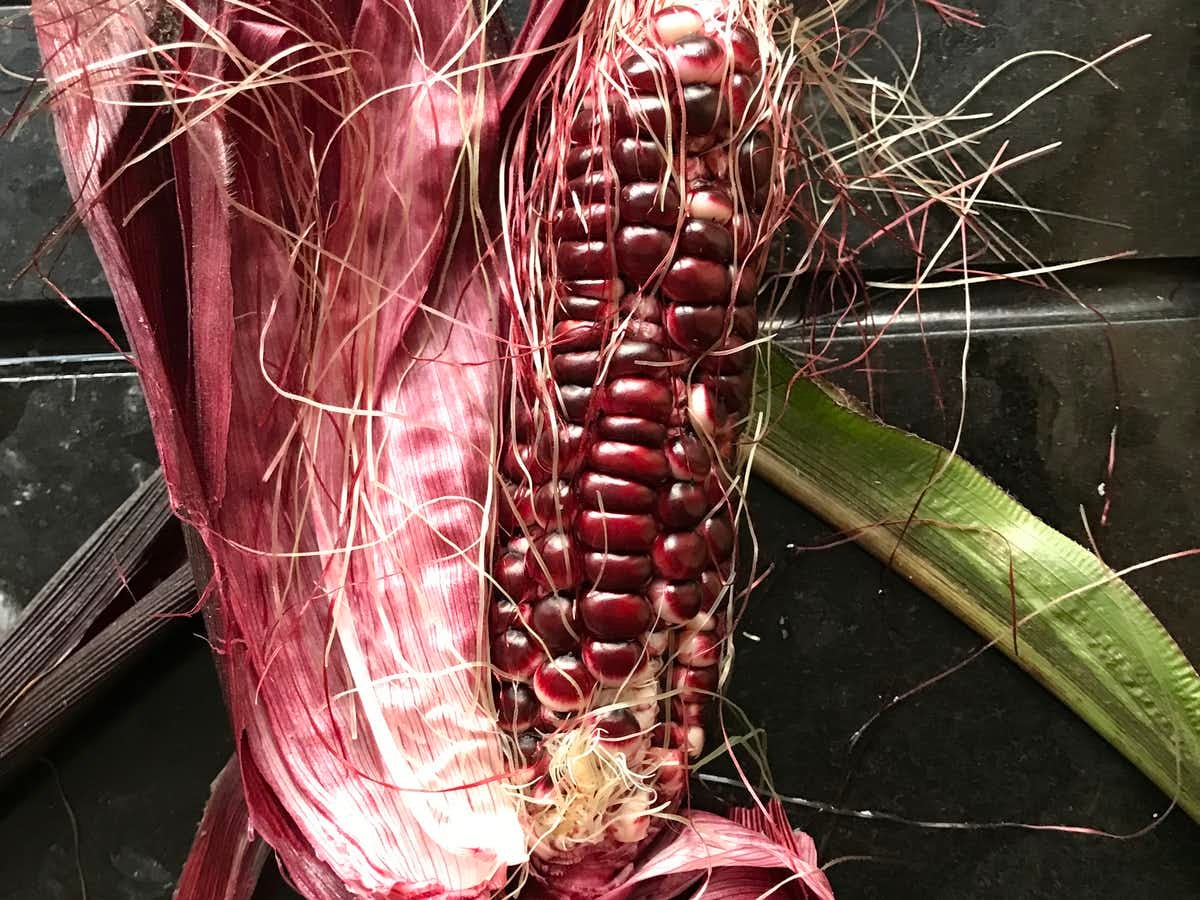
The story of glass gem is an outlier among seed conservation stories. Accounts of nearly vanished varieties, recovered intact as they were once grown, often from an isolated farmer or an aged gardener, are far more common. Recovery, revival, and narrow escapes from extinction feature centrally in these stories.
Glass gem reminds us that there is also potential for conservation in motion as well as in stasis, in reinvention alongside restoration. Diversity is not just something we can lose if we aren’t careful. It is something we can create.
I couldn’t get my hands on any glass gem seeds, so I tracked down another striking corn variety attributed to recent remixing. My double red sweet corn, which I bought from a UK supplier, originated in handiwork of breeder Alan Kapuler of Peace Seeds in Oregon, US.
A collector and cultivator of crop diversity since the 1970s, Kapuler today specialises in breeding new varieties from his diverse seed stocks. Double red is one product of Kapuler’s 15 years’ work with sweet corns high in anthocyanin pigments, including some originating among Hopi farmers. It is visually striking: deep red stalks and leaves and an equally red husk that is peeled back to reveal an ear of sparkling crimson kernels.
My harvest of double red was disappointing in comparison to the more abundant output of the F1 hybrid and Hopi sweet corn. I ended up with just a couple of ears, beautiful but devoured in a flash. Still, double red is even more new to my corner of the world than to Oregon and might need to adapt to the climate and soils I can provide.
That’s why I’ve saved some seeds of double red to sow next year. It’s a painfully small step, but it’s one I’m making in solidarity with a conservation agenda that my research has taught me can, and should, be centred on renewal, change and creativity.
Helen Anne Curry is an associate professor in history of modern science and technology at the University of Cambridge. This article first appeared on The Conversation.







